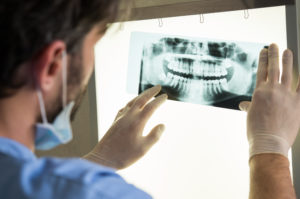

A new study led by a Canada Graduate Scholar at York U reveals that more than one quarter of Indigenous people go to the dentist only for emergencies. This underscores the pressing need for the Federal government to better tailor programs for this population.
(View on York University’s website)
Dental health is linked to a person’s overall health status. Existing research tells us that poor dental health is associated with seemingly far-ranging negative health outcomes, like heart disease. In fact, dental care is much more important or consequential than we believed a generation, or even a decade, ago.
A new study, led by York University graduate student and President’s Ambassador Vrati Mehra, in collaboration with Faculty of Health Professor Hala Tamim and other researchers, looks at dental health practices in one of Canada’s most vulnerable populations: Ontario’s Indigenous people. The researchers examined the prevalence and factors associated with visiting the dentist only for emergency care among Indigenous people in this province.

Existing research links dental and oral health with overall health status
This research, the results of which were published in the Journal of Immigrant and Minority Health (2019), found that more than a quarter of the participants visited the dentist only for emergencies and First Nations people were at increased odds of having poor dental care.
“This study is important because it is one of the first to highlight the extent of poor dental care use among this population,” Mehra says. “Our study highlights that a considerably large percentage of Ontario’s indigenous population report visiting the dentist only in cases of emergency. This over-reliance on emergency treatment not only means worse health outcomes for patients, but also leads to greater long-term health care costs for the province as well as the patient,” she adds.

From left: Hala Tamim and Vrati Mehra
Indigenous dental health and health care are poorer than other Canadians
The Indigenous or native people of Canada (including First Nations, the Inuit and the Métis) have remained one of the most disadvantaged groups in the Canadian healthcare system for decades. This is reflected in the dental care system as well.
The auditor general of Canada’s fall 2017 report brought to light two devastating facts:
- Inuit and First Nations people have nearly twice as much dental disease as other Canadians.
- Health Canada does not know whether its dental programming for Indigenous Canadians is actually improving their oral health.
Clearly, the need for this kind of research is pressing. Mehra, a Canada Institute for Health Research (CIHR) Canada Graduate Scholar (2019-2020) keenly interested in population health and health equity, took up this challenge.
Study utilized data from the 2014 cycle of the Canadian Community Health Survey
The Canadian Community Health Survey (CCHS) is one of the biggest national health surveys administered in Canada. It collects health-related data on Canadians aged 12 years and older across all provinces and territories.
The study sample consisted of Indigenous individuals of ages 12+, residing in Ontario. (This province has one of the largest Indigenous populations in the country.) The sample comprised of 676 participants – 54 per cent women and 46 per cent men. Sixty per cent of participants were First Nations; 40 per cent were Métis or Inuit.
The main outcome was assessed using the question “Do you usually visit the dentist?” for which the participants were provided with four options:
- “More than once a year for checkups;”
- “About once a year for checkups;”
- “Less than once a year for checkups;” and
- “Only for emergency care.”
The outcome was then categorized as “yes/no,” with “yes” indicating visiting the dentist only for emergency care. Additional information such as socio-demographic factors, including Indigenous identity group, age, sex, marital status, education and language spoken; socio-economic status, determined by household income, dental insurance and work status; health behavior factors, such as smoking and alcohol use; and oral health factors and other health-related factors, such as stress in life were assessed in relation to the outcome.

This new research found that a large portion of Indigenous people (28 per cent) wait to go to the dentist until the situation is an emergency
Key findings reveal increased odds of having poor dental care
The study had three key findings:
- Twenty-eight per cent of the participants visited the dentist only for emergencies;
- First Nations people were at increased odds of having poor dental care; and
- Being male, a smoker, having fair/poor health and lacking dental insurance puts the Indigenous Ontarians at increased odds of visiting the dentist only for emergency dental care.
Policy implications and the need to address social determinants of health
This work has pronounced policy implications. Mehra emphasizes that the social programs that deliver health services to Indigenous peoples must be routinely assessed and improved to cater to the needs of this population and be better tailored to confront the social determinants that hinder Indigenous peoples from using these services.
“Although social dental care programs do exist, it is unclear as to how efficacious they are. It is important that we routinely assess and amend these programs to accommodate the needs of this population,” Mehra explains.

The social determinants of health include factors such as access to income and social status, physical environments and health services
The social determinants of health are the broad range of personal, social, economic and environmental factors that determine individual and population health. These include the following, according to the Government of Canada:
- Income and social status;
- Employment and working conditions;
- Education and literacy;
- Childhood experiences;
- Physical environments;
- Social supports and coping skills;
- Healthy behaviours;
- Access to health services;
- Biology and genetic endowment;
- Gender;
- Culture; and
- Race/racism.
To read the original research article, “Prevalence and Factors Associated with Visiting the Dentist Only for Emergency Care Among Indigenous People in Ontario,” visit the website. To read the auditor general’s report (2017) – “Report 4: Oral Health Programs for First Nations and Inuit – Health Canada” – visit the website.
To learn more about Research & Innovation at York, follow us at @YUResearch; watch our new animated video, which profiles current research strengths and areas of opportunity, such as Artificial Intelligence and Indigenous futurities; and see the snapshot infographic, a glimpse of the year’s successes.
By Megan Mueller, senior manager, Research Communications, Office of the Vice-President Research & Innovation, York University, muellerm@yorku.ca
